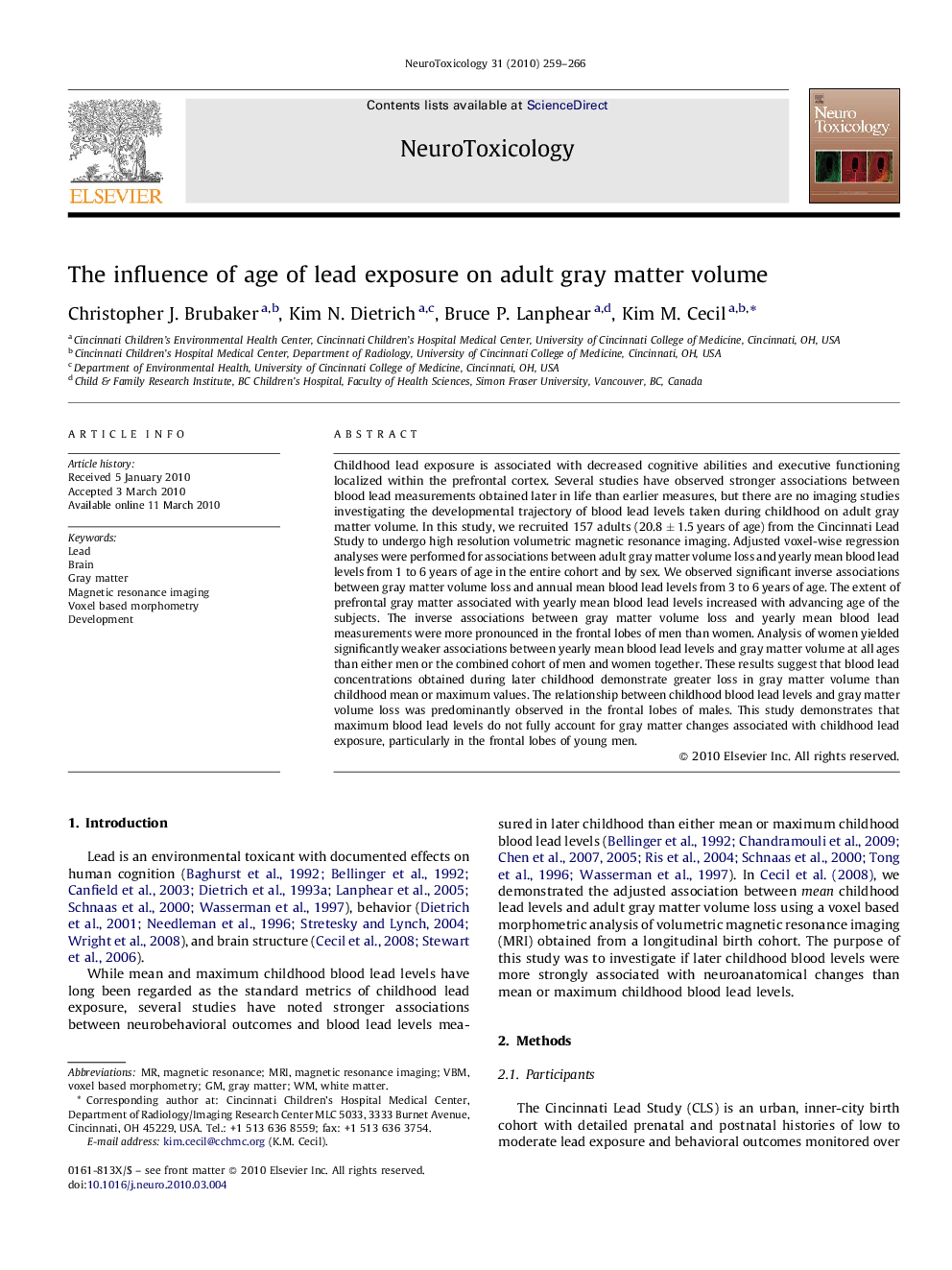| Article ID | Journal | Published Year | Pages | File Type |
|---|---|---|---|---|
| 2589925 | NeuroToxicology | 2010 | 8 Pages |
Childhood lead exposure is associated with decreased cognitive abilities and executive functioning localized within the prefrontal cortex. Several studies have observed stronger associations between blood lead measurements obtained later in life than earlier measures, but there are no imaging studies investigating the developmental trajectory of blood lead levels taken during childhood on adult gray matter volume. In this study, we recruited 157 adults (20.8 ± 1.5 years of age) from the Cincinnati Lead Study to undergo high resolution volumetric magnetic resonance imaging. Adjusted voxel-wise regression analyses were performed for associations between adult gray matter volume loss and yearly mean blood lead levels from 1 to 6 years of age in the entire cohort and by sex. We observed significant inverse associations between gray matter volume loss and annual mean blood lead levels from 3 to 6 years of age. The extent of prefrontal gray matter associated with yearly mean blood lead levels increased with advancing age of the subjects. The inverse associations between gray matter volume loss and yearly mean blood lead measurements were more pronounced in the frontal lobes of men than women. Analysis of women yielded significantly weaker associations between yearly mean blood lead levels and gray matter volume at all ages than either men or the combined cohort of men and women together. These results suggest that blood lead concentrations obtained during later childhood demonstrate greater loss in gray matter volume than childhood mean or maximum values. The relationship between childhood blood lead levels and gray matter volume loss was predominantly observed in the frontal lobes of males. This study demonstrates that maximum blood lead levels do not fully account for gray matter changes associated with childhood lead exposure, particularly in the frontal lobes of young men.
